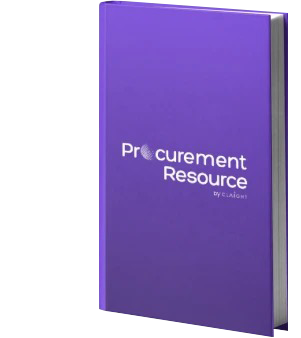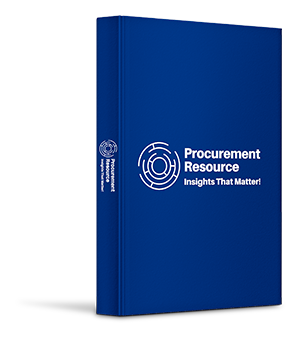Reports

Global Emulsifiers Market: Country Overview; Recent Events; Value Chain Analysis; Production Process; Cost Structure; Market Dynamics: Drivers & Constraints, Innovations & Trends, SWOT Analysis, Porter’s Five Forces; Industry Best Practices: Sourcing Strategy, Procurement Model, Contract Structure, Key Factors Influencing the Quotation; Key Supplier Analysis, 2024-2032
Emulsifiers Industry Report by Regional Category Spend, Price Analysis, Key Demand and Price Indicators, and Best Buying Practices
The global Emulsifiers market reached a value of about USD 8.7 billion in 2021. The industry is projected to grow at a CAGR of around 6.5% in the forecast period of 2022-2027 to reach a value of about USD 12.69 billion by 2027.
The global Emulsifiers industry report gives a comprehensive analysis of the industry, including key segments, trends, drivers, restraints, the competitive landscape, and other essential market aspects. The extensive application of the product in the food and beverage industry is primarily driving the market's growth. North America is the highest category spender by region, driving the demand for the Emulsifiers industry.
Industry Definition and Segmentation
An emulsifier or emulgent is a chemical that increases the kinetic stability of an emulsion. Surfactants, or surface-active agents, are a class of chemicals that include emulsifiers. An emulsifier is one of several chemical additions that aid in the suspension of one liquid in another and is employed in the creation of cosmetics, lotions, and some medications, where they perform a similar function to that of emulsifiers and stabilisers in foods: they prevent component separation and increase shelf life. The Emulsifiers industry report comprises segments by application (food and beverages, cosmetics and personal care products, oilfield chemicals, pharmaceuticals, and others) and region (North America, Europe, Asia Pacific, the Middle East, and Africa, and Latin America).
The North American Region is Driving the Growth of the Industry
North America holds the largest share in the industry as the United States is a significant user of emulsifying goods. The clean label movement in the nation regarding ingredients and chemicals used in food processing is predicted to increase the demand for natural and biobased ingredients, which will likely allow for a significant increase in the use of raw emulsifying materials in the future. In addition, stearoyl lactylates widespread usage in the manufacturing of pancakes, snacks etc., paired with the declaration of its safety by the FDA in the country, is likely to impact the market positively.
The industry is being driven by the extensive demand for products in the food and beverage industry. The use of emulsifiers like lecithin, a natural emulsifier, is rising as demand for dough strengthening and softening rises; it is also frequently utilised in animal feed manufacturing, further boosting the market demand. In addition, due to shifting customer tastes, these emulsifiers are being employed as enzyme alternatives. The inclination towards convenience and premium food contributes to the market's development. The growing shift towards sustainably derived emulsifiers in food packaging is furthering the industry's expansion. Furthermore, a rising trend among manufacturers to use non-PHO sourced emulsifiers, which are free of dangerous trans-fat and have natural and clean components, is likely to impact the market positively.
Despite this, the stringent policies by regulatory bodies for emulsifiers are likely to hinder the industry's expansion.
Best Procurement Practices
The global Emulsifiers industry report by Procurement Resource gives an in-depth analysis of the best buying practices followed by major global Emulsifiers regions across the globe, such as engagement models, contract terms, and buyer and supplier negotiation levers, among others.
Category Management Studies
An emulsifying agent's fundamental structure consists of a hydrophobic component, commonly a long-chain fatty acid, and a hydrophilic portion, which can be charged or uncharged. The emulsifier's hydrophobic portion dissolves in the oil phase, while the hydrophilic portion dissolves in the aqueous phase, resulting in a dispersion of minute oil droplets. Fats and oils have a similar structure to emulsifiers. A glycerol molecule can have one or two fatty acid groups added to it. Edible oils are combined with glycerol to create them.
Product Innovations by Manufacturers, Further Bolstering the Emulsifiers Market
The various innovations are aiding the industry in the product by manufacturers. Companies are developing fortified ingredients enriched with protein and amino acids, and omega-3 fatty acids in milk-based products, juices, spreads, salad dressings, sauces, breakfast cereals, and baked goods, among others, in response to the growing demand for functional food. Speciality ingredients with an enhanced nutritional profile are in high need in various applications, including dairy, bread, sauces, dressings, and condiments. Apart from these developments, the increased use of lecithin in animal feed and medicines, among other applications, is driving up demand. The constantly expanding pharmaceutical industry also aids the business's expansion. Also, an increase in R&D in sectors l pharmaceuticals and chemicals is likely to give the market a significant thrust.
The regional markets for the industry can be divided into North America, Latin America, Europe, the Middle East and Africa, and the Asia Pacific.
Key Industry Players Mentioned in the Emulsifiers Industry Report
- Archer Daniels Midland (ADM)
- Cargill Inc.
- BASF SE
- The Dow Chemical Company
- Kerry Group
Market Landscape
Companies are working to produce new and innovative goods, such as novel food emulsifier formulations to improve their market shares. Companies are also concentrating on boosting the production capacity of their current factories while investing in R&D. Companies are heavily spending to enhance the functional features of their existing product line. As a result, multiple product releases are predicted in the market research throughout the projection period.
Key Initiatives by Companies
- Cargill's Brazilian company will open a new plant in 2020 to produce pectin (a fruit by-product used as an emulsifier), a fruit by-product used in jams, drinks, dairy goods, and confectionery.
- Kerry Group opened a new regional development and food production facility in Georgia, Rome, in March 2020. This new facility will allow the firm to serve its European customers better, enhance manufacturing capacity, and expand its geographic reach.
1. Executive Summary
2. Emulsifiers Market Snapshot
2.1. Emulsifiers Market Outlook
2.2. Emulsifiers Industry Analysis by Application
2.2.1. Food and Beverages
2.2.2. Cosmetics and Personal Care Products
2.2.3. Oilfield Chemicals
2.2.4. Pharmaceuticals
2.2.5. Others
2.3. Region Overview
2.3.1. North America
2.3.2. Asia Pacific
2.3.3. Europe
2.3.4. Latin America
2.3.5. Middle East and Africa
3. Impact of Recent Events
4. Emulsifiers Value Chain Analysis
5. Emulsifiers Production Process
6. Trade Analysis
7. Major Risk Factors in Sourcing
8. Emulsifiers Cost Structure
9. Emulsifiers Price Analysis
10. Key Demand Indicator Analysis
11. Key Price Indicator Analysis
12. Emulsifiers Market Dynamics
12.1. Drivers & Constraints
12.2. Industry Events
12.3. Innovations & Trends
12.4. Swot Analysis
12.5. Porter’s Five Forces
12.5.1. Buyer Power
12.5.2. Supplier Power
12.5.3. Threat of New Entrants
12.5.4. Threat of Substitutes
12.5.5. Industry Rivalry
13. Industry Best Practices
13.1. Sourcing Strategy
13.2. Procurement Model
13.3. Contract Structure
13.4. Negotiation Levers
13.5. Pricing Model
13.6. Key Factors Influencing the Quotation
14. Key Supplier Analysis
14.1. Archer Daniels Midland Company (ADM)
14.2. Cargill Inc.
14.3. BASF SE
14.4. The Dow Chemical Company
14.5. Kerry Group
The global Emulsifiers market size was valued at USD yy billion in 2021.
In the forecast period of 2022-2027, the market is projected to grow at a CAGR of xx%.
The significant demand for premium and convenience food among consumers is one of the essential drivers of the Emulsifiers market growth.
Archer Daniels Midland (ADM), Cargill Inc., BASF SE, The Dow Chemical Company, and Kerry Group are some of the key players in the market.
The North American region of the Emulsifiers industry holds a significant share in the market.
The global Emulsifiers market attained a value of USD 8.7 billion in 2021, driven by the extensive demand for the food and beverage industry product. Also, owing to the various innovations in the development by manufacturers like developing fortified ingredients enriched with protein and amino acids as well as omega-3 fatty acids in products, Specialty ingredients with an enhanced nutritional profile and an increase in R&D in industries, the market is expected to witness a further growth in the forecast period of 2022-2027, growing at a CAGR of 6.5%. The market is projected to reach USD 12.69 billion by 2027. Some of the leading players in the industry are Archer Daniels Midland (ADM), Cargill Inc., BASF SE, The Dow Chemical Company, and Kerry Group.
Procurement Resources' detailed research approach explores deep into the industry, encompassing the macro and micro aspects of the industry. Its team of experts uses cutting-edge analytical tools and their expertise, thus, delivering its customers with market insights that are accurate and actionable and help them remain ahead of their competition.
Compare & Choose the Right Report Version for You
RIGHT PEOPLE
At Procurement Resource our analysts are selected after they are assessed thoroughly on having required qualities so that they can work effectively and productively and are able to execute projects based on the expectations shared by our clients. Our team is hence, technically exceptional, strategic, pragmatic, well experienced and competent.
RIGHT METHODOLOGY
We understand the cruciality of high-quality assessments that are important for our clients to take timely decisions and plan strategically. We have been continuously upgrading our tools and resources over the past years to become useful partners for our clientele. Our research methods are supported by most recent technology, our trusted and verified databases that are modified as per the needs help us serve our clients effectively every time and puts them ahead of their competitors.
RIGHT PRICE
Our team provides a detailed, high quality and deeply researched evaluations in competitive prices, that are unmatchable, and demonstrates our understanding of our client’s resource composition. These reports support our clientele make important procurement and supply chains choices that further helps them to place themselves ahead of their counterparts. We also offer attractive discounts or rebates on our forth coming reports.
RIGHT SUPPORT
Our vision is to enable our clients with superior quality market assessment and actionable evaluations to assist them with taking timely and right decisions. We are always ready to deliver our clients with maximum results by delivering them with customised suggestions to meet their exact needs within the specified timeline and help them understand the market dynamics in a better way.
Email Delivery Price: $ 899.00
The global nutmeg market reached a value of about 134 thousand tonnes in 2021. The industry is further expected to grow at a CAGR of about 4.5% in the forecast period of 2022-2027 to reach a value of around 167 thousand tonnes by 2027.
Read MoreEmail Delivery Price: $ 899.00
The global Artificial Intelligence Market reached a value of about USD 192 Billion in 2021. The industry is projected to grow at a CAGR of around 23% in the forecast period of 2022-2027 to reach a value of about USD 664.86 Billion by 2027.
Read MoreEmail Delivery Price: $ 899.00
The global HEOR market reached a value of about USD 1364.3 million in 2021. The industry is further expected to grow at a CAGR of about 12.81% in the forecast period of 2022-2027 to reach a value of around USD 2779.2 million by 2027.
Read More
